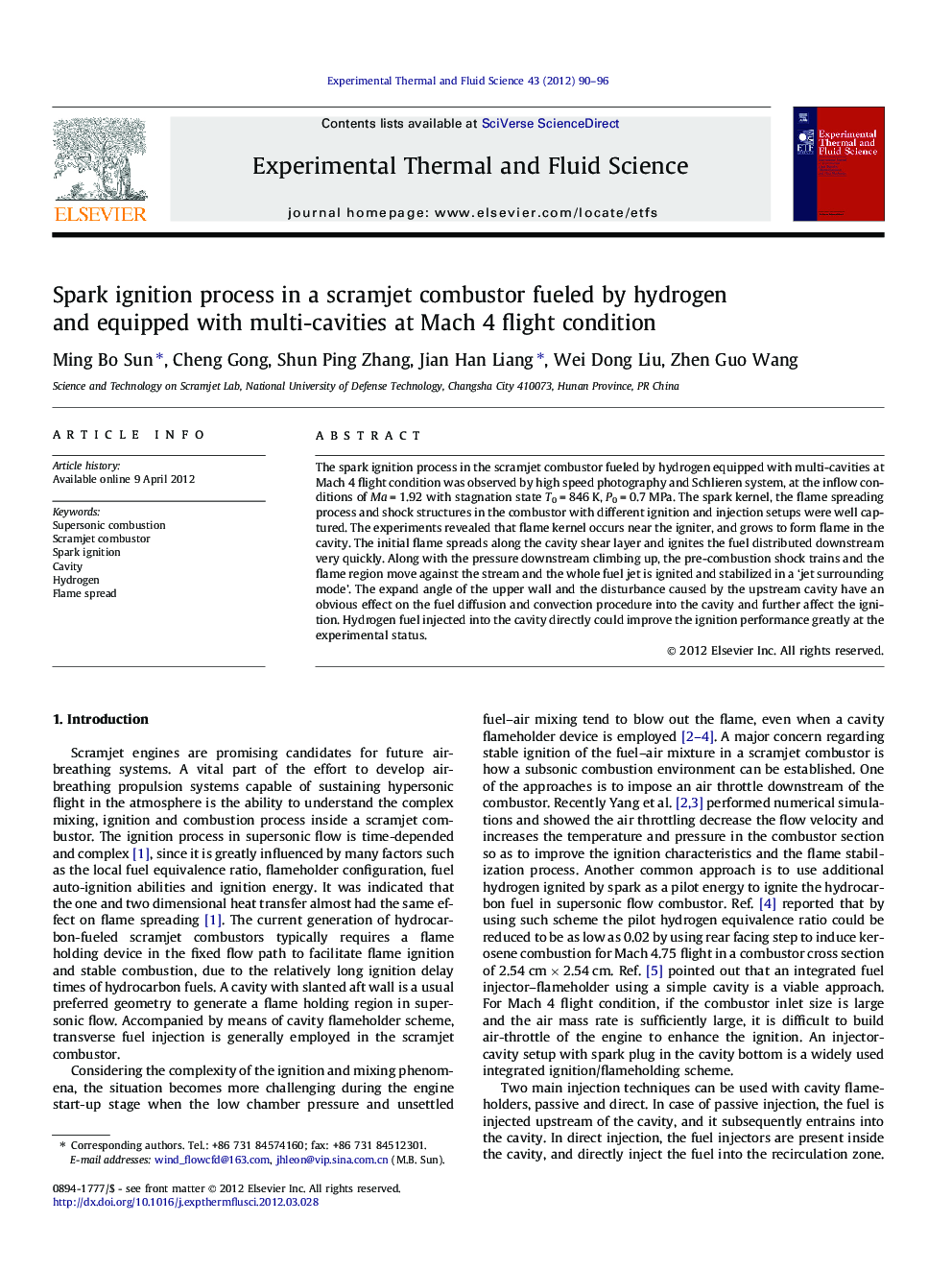| Article ID | Journal | Published Year | Pages | File Type |
|---|---|---|---|---|
| 651457 | Experimental Thermal and Fluid Science | 2012 | 7 Pages |
The spark ignition process in the scramjet combustor fueled by hydrogen equipped with multi-cavities at Mach 4 flight condition was observed by high speed photography and Schlieren system, at the inflow conditions of Ma = 1.92 with stagnation state T0 = 846 K, P0 = 0.7 MPa. The spark kernel, the flame spreading process and shock structures in the combustor with different ignition and injection setups were well captured. The experiments revealed that flame kernel occurs near the igniter, and grows to form flame in the cavity. The initial flame spreads along the cavity shear layer and ignites the fuel distributed downstream very quickly. Along with the pressure downstream climbing up, the pre-combustion shock trains and the flame region move against the stream and the whole fuel jet is ignited and stabilized in a ‘jet surrounding mode’. The expand angle of the upper wall and the disturbance caused by the upstream cavity have an obvious effect on the fuel diffusion and convection procedure into the cavity and further affect the ignition. Hydrogen fuel injected into the cavity directly could improve the ignition performance greatly at the experimental status.
► Spark ignition process in scramjet combustor at Mach 4 flight condition is demonstrated. ► Flame kernel occurrence and growth in the cavity is examined. ► Initial flame spreading and pre-combustion shock train changing during ignition are analyzed. ► Effects of expand angle, upstream cavity and injection scheme on ignition are discussed.
